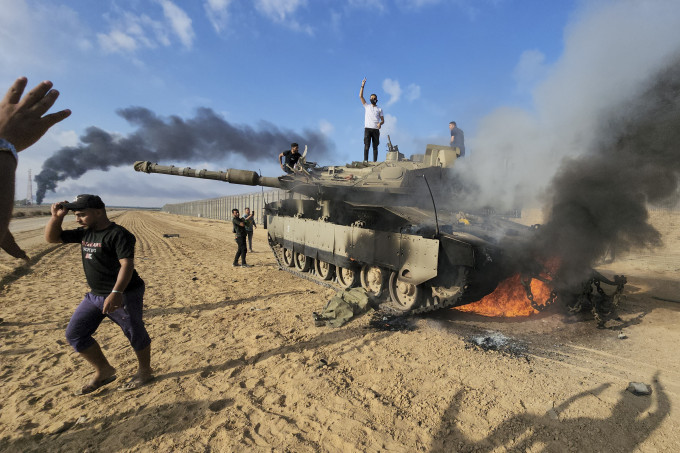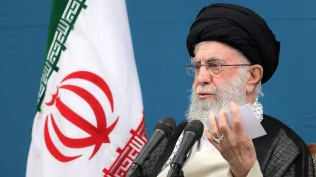The escalating tensions between Iran and Israel have reached a critical juncture bringing the military capabilities of both nations into sharp focus. Iran launched its largest missile attack on Israel to date on Tuesday firing 200 ballistic missiles, most of which were intercepted by Israel’s advanced defense systems, in retaliation for the killing of key Iranian and Hezbollah commanders.
The Israeli Prime Minister in a stern warning to Iran said that the latter committed a “big mistake” by launching attacks on Tel Aviv and vowed to retaliate against Iran for its missile attack. He said, “Iran made a big mistake tonight and will pay for it, whoever attacks us, we will attack them.”

The relationship between these two nations has been characterised by a complex interplay of proxy conflicts, clandestine operations, and strategic posturing in which their military capabilities play a pivotal role.
According to The Military Balance 2023, published by the British think tank the International Institute for Strategic Studies (IISS), Israel maintains 169,500 active military personnel supported by a reserve force of 465,000, while Iran fields a much larger force with around 610,000 active personnel and an additional 350,000 reservists.
 An Israeli Apache helicopter fires a missile towards southern Lebanon as seen from northern Israel. (AP Photo/Baz Ratner)
An Israeli Apache helicopter fires a missile towards southern Lebanon as seen from northern Israel. (AP Photo/Baz Ratner)
Air Power
According to Military Balance 2023, Israel boasts a superior air force with 612 fighter jets, including advanced models like the F-35 and F-16. Israel’s advanced models are capable of executing long-range missions and delivering precision strikes. Israel’s air defense systems, such as the Iron Dome, Patriot, David’s Sling, and the Arrow system enhance its defensive capabilities against aerial threats. These systems are designed to intercept various aerial threats, including missiles and drones.
Iran, on the other hand, operates 551 aircraft, but many are outdated due to sanctions that have hindered fleet modernization. Iran has focused on developing its missile and drone capabilities as a countermeasure to its air force limitations
 A man runs for cover as a smoke raises in the background following an Israeli airstrike in Dahiyeh, Beirut, Lebanon. (AP Photo/Hassan Ammar)
A man runs for cover as a smoke raises in the background following an Israeli airstrike in Dahiyeh, Beirut, Lebanon. (AP Photo/Hassan Ammar)
Land forces
In terms of ground forces, IISS states that Iran maintains a larger tank fleet with 10,513 battle tanks, 6,798 artillery guns and 640 armoured personal carriers. The army also boasts 50 helicopters while the Islamic Revolutionary Guard Corps (IRGC), primary branch of the iranian Armed forces, has 5 helicopters.
Meanwhile, Israel has around 400 battle tanks, 530 artillery guns and over 1,190 personal carriers.
 Smoke rises from the site of an Israeli airstrike in Dahiyeh, Beirut, Lebanon (AP Photo/Hassan Ammar)
Smoke rises from the site of an Israeli airstrike in Dahiyeh, Beirut, Lebanon (AP Photo/Hassan Ammar)
Naval
Both nations have limited naval capabilities relative to their land and air forces. Where Iran has 17 tactical submarines, 68 patrols and coastal combatants, seven corvettes, 12 landing ships, 11 landing craft, 18 logistics and support equipment, Israel has five submarines and 49 patrol and coastal combatants.
 Palestinians celebrate by a destroyed Israeli tank at the Gaza Strip fence east of Khan Younis southern (AP Photo, File)
Palestinians celebrate by a destroyed Israeli tank at the Gaza Strip fence east of Khan Younis southern (AP Photo, File)
Missile capabilities
According to US-based think tank the Center for Strategic and International Studies (CSIS) Missile Defense Project, Iran possesses a substantial arsenal of ballistic missiles, estimated to be over 3,000. These include various types, such as the Shahab-3, which is a medium-range ballistic missile, and the newer Fattah-1, which Iran claims has hypersonic capabilities. The Fattah-1 can reportedly travel at speeds up to 3,800 miles per hour (Mach 5). Last year, Iran claimed that it had created a hypersonic missile capable of travelling at 15 times the speed of sound.
On contrary Israel has invested heavily in developing advanced missile defense systems, including the Iron Dome, David’s Sling, and Arrow systems, which are designed to intercept various types of aerial threats. The Israeli military claims that Iron Dome has an interception success rate exceeding 90%, particularly during conflicts where it has been tested extensively. During the recent Iranian missile barrage, Israel military claimed that it successfully intercepted most of the incoming missiles.
Disclaimer: The copyright of this article belongs to the original author. Reposting this article is solely for the purpose of information dissemination and does not constitute any investment advice. If there is any infringement, please contact us immediately. We will make corrections or deletions as necessary. Thank you.







